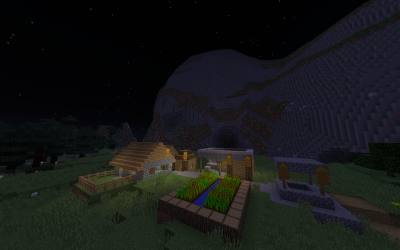Voynich: Difference between revisions
No edit summary |
No edit summary |
||
| Line 1: | Line 1: | ||
[[File:Voynich.png| | [[File:Voynich.png|400px|thumb|right|Voynich]] '''Voynich''' is a small [[Oranjestad]] colony located in the southeastern rain shadow of the New World Lands of [[Gaya Alliance]]. The colony is comprised of just a handful of buildings, and today serves as a gateway to the much larger Oranjestad colony to the southwest, [[Etouffee]]. | ||
Voynich | ==History== | ||
The first written account of Voynich, sometimes also spelled Voxnich, dates from 1269. The writings, referred to as the Voynich Manuscript, describes a small subsistence community of Gayanian and Sammichian peoples and their struggles against brutal Skullhunter raids. These raids were described as an expected way of life, and were purported to have been happening on a regular basis for several centuries. | |||
Skullhunter raids continued through the fifteen hundreds. The end of the 16th century was particularly hard on the population. In the span of 25 years, the wars between the townsfolk and the Skullhunter tribes greatly reduced the population to 420 people, and in 1598 the survivors were struck by a plague pandemic that reduced the population to just three families. | |||
===Modern times=== | |||
In 1823, Oranjestad explorers, seeking an overland route to Etouffee, discovered the remnants of the village. Voynich had never recovered from the devastation, and just nine residents were found to be living there. | |||
Because of its strategic position along the Etouffee Overland Route, Voynich became an important Oranjestad military outpost. The Voynich Watchtower, still visible today, was built in 1912. The remaining descendants of the original population welcomed Oranjestad support and voted to join the nation in 1955. | |||
Revision as of 15:14, 25 January 2018

Voynich is a small Oranjestad colony located in the southeastern rain shadow of the New World Lands of Gaya Alliance. The colony is comprised of just a handful of buildings, and today serves as a gateway to the much larger Oranjestad colony to the southwest, Etouffee.
History
The first written account of Voynich, sometimes also spelled Voxnich, dates from 1269. The writings, referred to as the Voynich Manuscript, describes a small subsistence community of Gayanian and Sammichian peoples and their struggles against brutal Skullhunter raids. These raids were described as an expected way of life, and were purported to have been happening on a regular basis for several centuries.
Skullhunter raids continued through the fifteen hundreds. The end of the 16th century was particularly hard on the population. In the span of 25 years, the wars between the townsfolk and the Skullhunter tribes greatly reduced the population to 420 people, and in 1598 the survivors were struck by a plague pandemic that reduced the population to just three families.
Modern times
In 1823, Oranjestad explorers, seeking an overland route to Etouffee, discovered the remnants of the village. Voynich had never recovered from the devastation, and just nine residents were found to be living there.
Because of its strategic position along the Etouffee Overland Route, Voynich became an important Oranjestad military outpost. The Voynich Watchtower, still visible today, was built in 1912. The remaining descendants of the original population welcomed Oranjestad support and voted to join the nation in 1955.